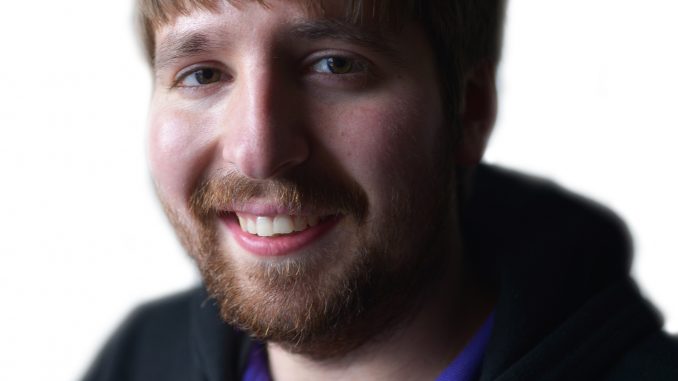
After appearing as the headliner for the WWE Hall of Fame Class of 2014 and in hindsight, eulogizing himself on “Raw,” Warrior collapsed the next day while walking to his car and was rushed to an Arizona hospital, where he was pronounced dead.
It was Benoit-level shock for me.
I flashbacked to reading David Shoemaker’s “The Squared Circle: Life, Death and Professional Wrestling,” in which dozens of legends’ careers are analyzed and their impact on sports entertainment is measured.
Although Warrior had not passed when Shoemaker’s book was published, the wrasslin’ scribe included Parts Unknown’s favorite native due to rumors in the early ‘90s claiming Warrior had died, and an imposter was shaking the ropes years later.
The section serves as a much needed breather in Shoemaker’s captivating yet depressing tome.
As you can imagine, several hundred pages about your heroes dying will cripple your spirit.
Personally, the most depressing chapter deals with the murder of Bruiser Brody.
Anti-authority way before Daniel Bryan and Stone Cold, Brody personified independence by jumping across territories and bending promoters to his own whim. Defining the modern brawling style, the scraggly bearded 6-foot-8-inch madman terrorized opponents, painted rings with his blood and sold out arenas spanning the globe.
And then on July 16, 1988, Brody was stabbed to death in a locker room shower in Puerto Rico.
Although Jose González was initially charged with first-degree murder and then later reduced and tried for involuntary homicide.
González was acquitted on all counts, citing self-defense.
The most interesting aspect of the Brody chapter is how Shoemaker references a “shoot interview” on YouTube where the traditionally reserved grappler speaks openly about the inner-workings of his sacredly hushed business.
You can find tons of “shoot interviews” where wrestlers reveal their thoughts on past characters, matches, co-workers and bosses. In 2014, it’s almost passé.
But in 1987, pro wrestling’s magicians had not yet exposed their tricks to the public.
It’s almost unfathomable to believe Brody, of all people, would be the man to peel back the curtain even a smidge.
It’s more jarring than listening to the Undertaker comment on Triple H’s DVD.
So whose voice can be heard conducting this historic interview?
Dave Meltzer? Bill Apter? Mike Adamle?
Shoemaker doesn’t know – but I do.
It’s my uncle.
“It was my first job,” he, who wishes to remain anonymous, said. “I was a weekend sports anchor/weekday reporter and photographer for a small NBC affiliate in southern West Virginia.”
One year before Brody’s death, my uncle foggily recalls the rebellious brawler was scheduled to compete at the Brushfork Armory.
“I don’t remember how the studio interview got set up,” he said. “I was wrestling-minded at the time, so I probably noticed the card and may have initiated contact with the promoter.”
Within the first three minutes of the video, Brody commits sacrilege by revealing his real name, Frank Goodish, and that he used to produce the World Class Championship Wrestling television show.
Only because he assumed the camera wasn’t filming yet.
“I honored Frank’s wishes by never showing that part on the air,” my uncle said. “But now the raw footage is out there on the Internet. I guess it’s for the best because now people get to see a different side of him.”
As the scarred caveman pontificates on the health of the industry, he claimed that wrestlers were no longer “fat and blonde,” but “well-conditioned athletes” as evidenced by his and fellow competitors’ high school and college athletic background.
Explaining how it feels to be cheered in one city and jeered in another, Brody offered a glimpse into his psychological prowess by breaking down the different crowds’ rationales for their reactions toward him.
In the most surprising moment of the interview, Brody said that cable TV and WWE’s international expansion was best for business, even though he etched his legacy as a journeyman. Brody justified this head scratcher by expressing the potential benefits of global access thanks to cable TV projecting the wrasslers into foreign homes.
“He blew me away with how articulate he was,” my uncle said. “I was impressed with his depth as a person, as well as his depth as a character.”
These days, my uncle only follows sports entertainment during “WrestleMania” season. But he becomes reacquainted with his old love whenever he’s on the phone with his proud nephew.
“In the 27 years since that interview, I have been privileged to cover a handful of Final Fours, two NCAA basketball championships, the Stanley Cup finals, the National Finals Rodeo in Las Vegas, the Daytona 500 and two U.S. Open golf tournaments,” my uncle said. “The interviews I conducted during those events have been long forgotten or soon will be, but the 22 minutes with Brody speaks louder today than it did back then. And that’s not because of the interviewer, but because as was the case with his matches, Brody carried it.”
In the aftermath of Ultimate Warrior’s untimely passing, the one positive is that after years of estrangement, the tassel-bound, face painted superhero was able to mend fences with Vince McMahon to say goodbye to his fans.
On the other hand, Brody didn’t have that platform of the WWE Universe. But he did have a borderline “shoot interview” to connect with his fans long after his untimely death.
It might be a grainy video for a small-town news station, but knowing Brody a little better as we do now, I think he’d be satisfied.
John Corrigan can be reached at john.corrigan@temple.edu.



Be the first to comment